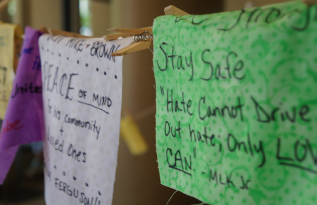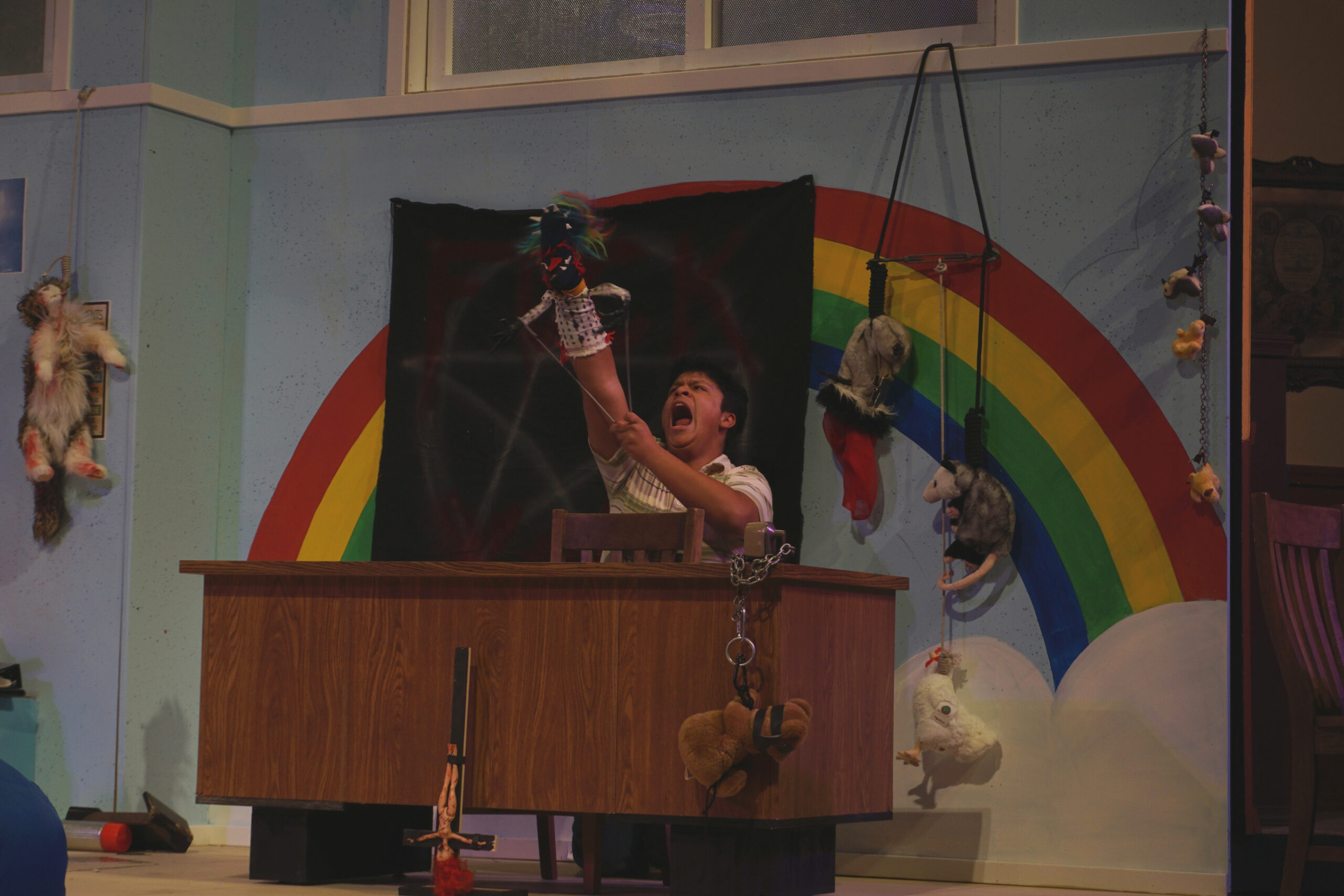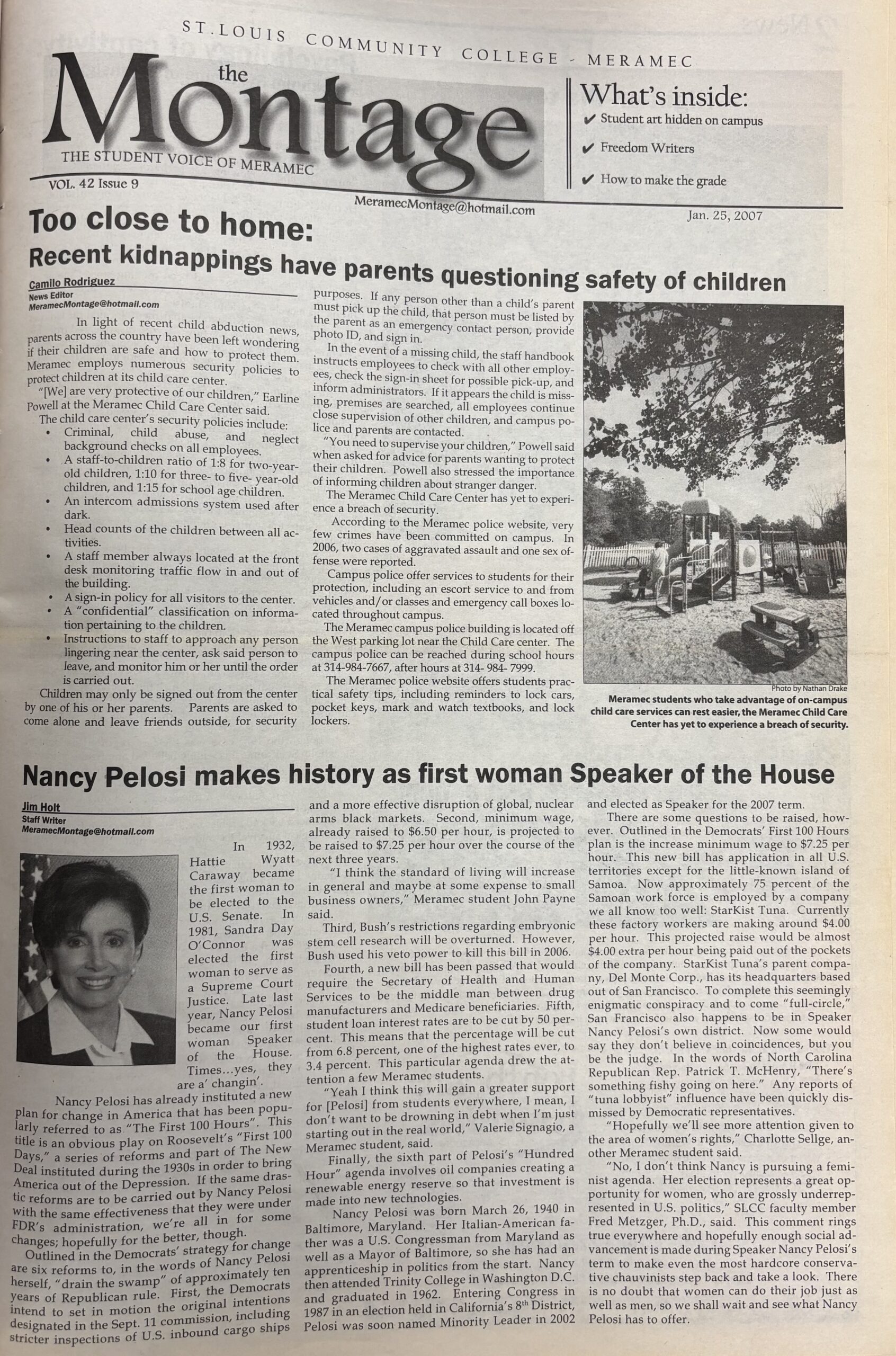Square by square, students raise awareness for Ferguson through messages of hope

By: BRITTNEY FARROW
Staff Writer
The Clothesline for Peace Project made its annual appearance on the St. Louis Community College – Meramec campus on Monday, Oct. 6, on the Student Quad. As students walked from the Student Center to class, members of the Global Justice Project, Diversity and Native Peoples clubs sat at a table with markers and triangles of fabric.
When students approached, they were encouraged to write down messages of hope for the citizens of Ferguson for an awareness effort that is set to involve many aspects of the campus community.
After the shooting of Michael Brown in Ferguson on Aug. 9, members of the Meramec faculty brainstormed ways in which they could raise awareness for the issue with students on campus, said Sociology Professor Cindy Epperson said.
It was then that Vice Chancellor at the Academic Affairs Office Joyce Johnson suggested making a quilt. Johnson said she inherited an interest in quilting from members of her family and had seen the craft used as a form of activism in projects such as The AIDS Memorial Quilt. The project was also loosely inspired by the Clothesline Project, which raises awareness for domestic violence and sexual assault by having participants write messages on blank tee shirts.
Epperson said she supported the birth of the project. Every semester, Epperson asks her students to complete a survey which evaluates their stances on social issues. With this questionnaire, students use the Likert Scale to determine their feelings on topics such as social class, politics and racism. When Epperson added questions asking students if they could describe the social issue behind the protests in Ferguson, she said she was surprised to discover the majority of her students could not.
“I’ve been shocked by how many students aren’t aware of what’s happening in Ferguson,” Epperson said. “I want students to realize that it should matter [to them] even if it’s not impacting [them] directly.”
For three days, students wrote their messages down on pieces of fabric that were displayed on a clothesline in the Student Center. As they wrote, club volunteers at the booth asked them how the protests in Ferguson had affected them and how they had made them feel.
Epperson said that in her classes, students have discussions about what defines a social movement. She said that in order for something to be classified as a social movement, it has to meet a certain set of criteria and that a social movement relies heavily on the people involved. Because of this, she said she wants students on campus to look for ways to help the residents of Ferguson. Johnson also shared this belief.
“I want students to realize that through their education they have a responsibility to try and make the world a better place,” said Johnson.
The project ended on Oct. 9, but will not be complete until March. Now that the messages have been collected, Johnson will compile the pieces and choose the strongest statements to make into a quilt. Students from the Art Department on campus will also be involved and are responsible for incorporating symbols women used in protest throughout history onto the fabric.
Once the quilt has been finished, it will be unveiled in March as a part of Women’s History Month and will become a permanent display piece on campus. The STLCC Forest Park and STLCC Florissant Valley campuses also participated in the Clothesline for Peace project and will each have a quilt on display as well.











